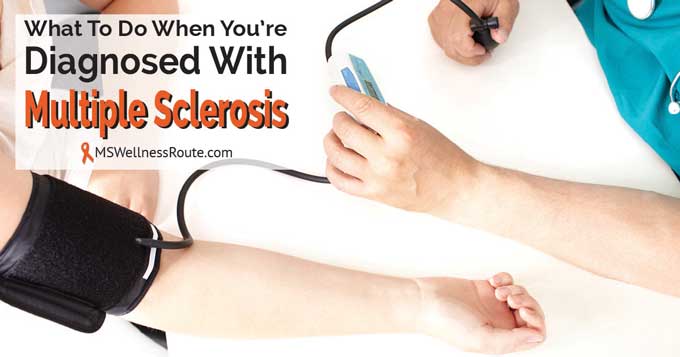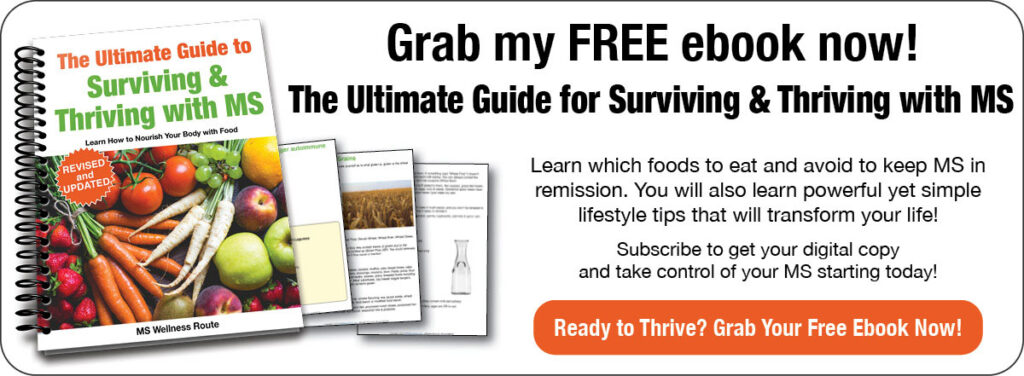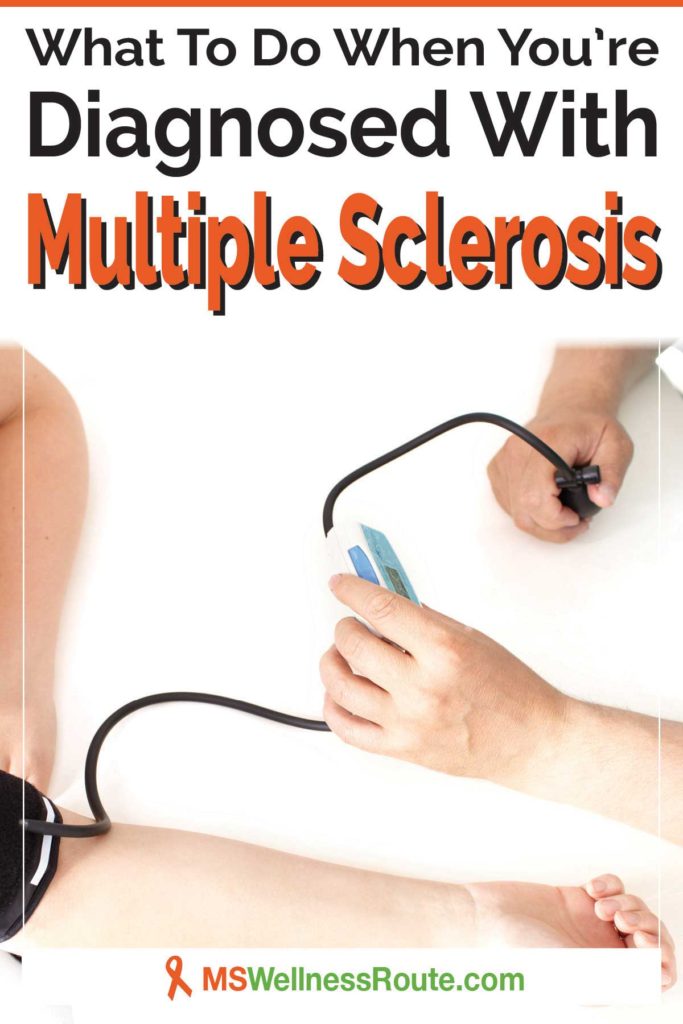Last Updated on November 29, 2023 by Cathy

You know something is wrong with you but blood tests keep coming back and everything is fine. You’ve searched the internet and everything is pointing to multiple sclerosis (MS). Then why can’t doctors give you a diagnosis?
MS is a hard disease to diagnose because the symptoms can mimic other conditions. Unfortunately, there isn’t a single test that confirms it’s MS. People are usually sent to a neurologist before being diagnosed with MS.
When I was fifteen years old I went blind in my left eye. It turned out to be optic neuritis, my ophthalmologist told me “You might have MS someday.” But I was never tested, leaving that commitment always in the back of my mind.
For the next several years I would get weird sensations that weren’t normal. Like an electrical shock going down my spine. I knew it was MS but I ignored it hoping it would go away. Eventually, I was officially diagnosed with MS but only with an office visit, no blood work, no MRI, and no spinal tap.
Even though I knew I had MS all those years it was still extremely upsetting not knowing what my future held. Would I become wheelchair-bound? Would I become bedridden? The neurologist sent me home telling me to “hope for the best and plan for the worse.” That was it, no follow-up visit – nothing. I was on my own.
It’s extremely scary when you’re diagnosed with MS. In my personal experience, neurologists didn’t give me any emotional support or information where I could get help. I hope it’s different for you. Probably because it’s their hundredth or even thousandth diagnosis but they forget… it’s the patient’s first diagnosis. If possible look for a naturopath neurologist.

First Steps After Being Diagnosed with MS
Once you’re diagnosed with MS the neurologist wants you to do is to start one of the medications as soon as possible. Before you agree to take one, take a week to digest the information and decide what you want to do first.
You’ve already had MS for many years so one week won’t make a huge difference.
Do lots of research on different options. There are many different MS medications today and they all come with bad side effects. Most importantly, trust you’re instincts. Don’t let anyone including your doctor push you into something you don’t want to do.
If you feel more comfortable taking one of the medications, then take it. But, if you don’t feel comfortable taking one then don’t. It’s your body so it’s your choice. Back when there were only the ABC drugs (Avonex, Betaseron, Copaxone) I avoided them for years. Every time I visited my neurologist he would try and convince me to start one. Finally, after a bad MS flare left me unable to walk I started taking one.
It was horrible. I was extremely depressed, I even had suicidal thoughts which I never had before. I hated taking the muscular shot every week, it left a huge bruise and gave me a horrible headache. Plus, after each injection, I had flu-like symptoms for the next couple of days. I felt like my life was over.
Quick Links To Information In This Post:
How To Eat An Anti-Inflammatory Diet To Stop MS
What Is The Wahls Protocol?
How To Tell If You Have Candida?
While I was on the medication my MS flares were getting stronger and closer together. I was averaging about three a year. I felt like the medication was making me worse, not better. Finally, after the worst flare, I’d ever experienced, I discovered I could use food as my medicine instead.
After one year of avoiding processed foods and eating real food, I was feeling great. So I stopped all medications against my doctor’s advice. I’m glad I stood up for myself because that was the best decision I made.
Food As Medicine

Unfortunately, conventional doctors don’t see the importance of a healthy diet for MS. Even the National MS Society downplays the importance. But, as the saying goes – you are what you eat. If you are eating the standard American diet (SAD) then you’re eating a highly inflammatory diet. It’s full of refined sugar, processed meats, fried foods, refined grains, artificial ingredients, and sugary drinks.
It also includes antibiotics, chemicals, growth hormones, pesticides, preservatives, and unrecognizable ingredients. It’s linked to obesity, heart disease, cancer, and diabetes. Plus, it’s missing important nutrients for your body to thrive.
Instead, you should be eating real food, food that has little to no processing. There are many different diets to choose from for MS but there’s no “one” perfect diet for everyone. You need to eat an anti-inflammatory diet that works for YOUR body.
Foods to eat:
- Vegetables
- Fruits
- Herbs and Spices
- Healthy fats
- Wild-caught fish
- Pasture-raised poultry
- Grass-fed beef

Dr. Terry Wahls, author of The Wahls Protocol, based her diet on the paleo diet. She was in a tilt reclining wheelchair due to MS. After nine months of a highly nutrient-dense paleo diet, she was able to reverse her MS. Not everyone will see such dramatic results as hers but it’s still very inspiring. The important thing is to stop the progression of your MS. Check out her TedTalks video, which has over three million views:
Changing your diet is extremely important but so is changing your lifestyle habits. If you smoke, stop today. Stop using toxic body care products and toxic household cleaners. Avoid plastic that contains BPA. Use non-toxic cookware like cast iron or stainless steel.
Sugar is your enemy
It’s best to eat a low-carbohydrate diet. Because many people with MS also have a yeast overgrowth called Candida. Bad bacteria, parasites, and mycotoxins (mold) also thrive on sugar. That includes natural sugars like honey, maple sugar, and fruit. It’s best to eat avocados, berries, lemons, and limes since they are low in sugar. If it tastes sweet it has sugar. Sugar is addicting so it will be hard to break but it will benefit you in the long run.
Lifestyle Changes
Use air purifiers and/or plants to clean the air in your home. Place water filters on your faucets to avoid chemicals in the tap water. We live in a very toxic world so it’s impossible to remove all of it. But every little bit that you remove is less for your body to deal with.
It’s important to keep moving. Exercises like walking, yoga, tai-chi, swimming are all great. If you already have mobility issues check out OptimalBody Personal Fitness. It’s an online gym for people with MS that you can do in the comfort of your home. They even have exercises for people in wheelchairs.
Vitamin D
Get your vitamin D checked. The further away a person lives from the equator the higher their risk is for MS. This is due to the lack of sunshine which produces vitamin D in your body. Your level should be between 60-100 ng/mL.
Don’t accept a “normal” get the actual number. When I was first tested my conventional doctor told me it was normal. But when I asked for the number it was at 30.5, way too low. You can safely take up to 10,000 IU’s of vitamin D each day. Don’t go over unless you have a doctor who specializes in high doses of vitamin D.

If your doctor won’t test you, you can get tested through an online lab like Walk-in Lab. It’s extremely easy to use, you order it online then go to a local lab for the blood draw. They often have sales so watch for that.
You Can Do This!
Eat healthy, exercise, learn to manage stress, and remove infections (candida, Lyme, etc.). Get plenty of good quality sleep, and believe that you will heal.

Books I recommend after being diagnosed with MS:
Get Your FREE – The Ultimate Guide to Surviving & Thriving with MS:
Want to remember this health tip? Pin it to your favorite Pinterest board!

Resources for Diagnosed With MS:
Diet & Nutrition. Eating healthy to take charge of your health.





